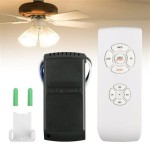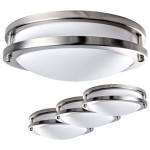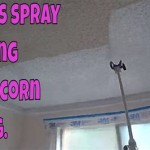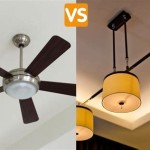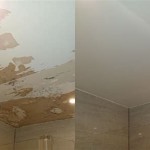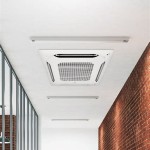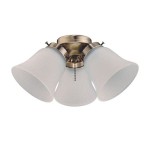DIY Ceiling Mount Shower Curtain Rod: A Comprehensive Guide
Ceiling-mounted shower curtain rods offer an elegant and practical solution for bathrooms with unique layouts, challenging tile configurations, or simply a desire for a more aesthetically pleasing shower enclosure. Unlike traditional wall-mounted rods, ceiling-mounted options provide greater flexibility in placement and can create a more spacious feel within the shower area. This article provides a comprehensive guide for undertaking a DIY ceiling-mounted shower curtain rod installation, covering essential considerations, required tools and materials, step-by-step instructions, and potential troubleshooting tips.
Key Considerations Before Installation
Before embarking on a DIY ceiling-mounted shower curtain rod project, several crucial factors must be carefully considered. These pre-installation assessments will significantly impact the success and longevity of the installation.
Ceiling Material and Structure: The most critical aspect is determining the composition and structural integrity of the ceiling. Common ceiling materials include drywall, plaster, and various types of tiles attached to underlying structural elements like joists or concrete. Drywall, while common, is often not strong enough to directly support a shower curtain rod, especially with the added weight of a wet curtain. Locating and attaching the rod to a ceiling joist is ideal as it offers significantly greater support. If joists are not accessible or appropriately positioned, using anchors specifically designed for the ceiling material is essential. Concrete ceilings will necessitate the use of specialized drilling equipment and concrete anchors. Understanding the ceiling’s material and structure is paramount to selecting the correct mounting hardware and ensuring a secure installation.
Rod Material and Weight Capacity: Shower curtain rods are available in various materials, including stainless steel, aluminum, and brass. Stainless steel is generally considered the most durable and rust-resistant option, making it ideal for the humid environment of a bathroom. Aluminum is lighter and less expensive but may be prone to bending or corrosion over time. Brass offers a classic aesthetic but can be more expensive and require more maintenance. When selecting a rod, it is imperative to consider its weight capacity. The rod must be able to support not only the weight of the shower curtain itself but also the potential weight of water absorbed by the curtain. Overloading the rod can lead to sagging, bending, or even complete failure of the mounting system.
Shower Layout and Rod Placement: The layout of the shower and surrounding bathroom area significantly influences the optimal placement of the ceiling-mounted shower curtain rod. Consider the shape and size of the shower enclosure, the location of the showerhead, and the presence of any obstructions such as windows or fixtures. The rod should be positioned to effectively contain water within the shower area while also allowing for comfortable movement and access. Carefully measure the required rod length and the distance from the showerhead to the desired curtain line. Accurate measurements are crucial for ensuring that the shower curtain hangs properly and prevents water from splashing outside the enclosure. Consider also the desired aesthetic; an oval or curved rod might better suit certain layouts than a straight rod. The spacing between the ceiling supports also needs to be carefully planned. Wider spacing may require a heavier gauge rod to minimize sagging.
Moisture and Ventilation Considerations: Bathrooms are inherently humid environments, and moisture can significantly impact the lifespan of building materials and fixtures. Proper ventilation is essential for minimizing moisture buildup and preventing mold and mildew growth. Ensure that the bathroom has adequate ventilation through an exhaust fan or open window. Consider using a shower curtain made of water-resistant or waterproof material to further minimize moisture exposure. The ceiling-mounted shower curtain rod itself should be made of a rust-resistant material, such as stainless steel, to withstand the humid environment. The choice of mounting hardware should also take moisture resistance into account to prevent corrosion that could weaken the installation over time. Proper ventilation and moisture management are crucial for prolonging the life of the shower curtain rod and preventing potential damage to the ceiling and surrounding areas.
Required Tools and Materials
A successful DIY ceiling-mounted shower curtain rod installation requires the right tools and materials. Gathering these beforehand will streamline the process and prevent interruptions. Here is a comprehensive checklist:
Shower Curtain Rod Kit: This typically includes the shower curtain rod itself, ceiling mounting brackets or flanges, screws or bolts for attaching the brackets to the ceiling, and possibly decorative covers for the brackets. Ensure the kit is appropriate for ceiling mounting and includes all necessary hardware.
Measuring Tape: Accurate measurements are crucial for determining the correct rod length, bracket placement, and overall positioning of the shower curtain. A good quality measuring tape will ensure precise results.
Pencil or Marker: Used for marking the location of the ceiling joists (if applicable) and bracket mounting points.
Stud Finder (Optional but Recommended): A stud finder is essential for locating ceiling joists, providing a secure attachment point for the mounting brackets. If joists are not accessible, appropriate anchors for the ceiling material must be used.
Drill with Drill Bits: A power drill is needed for creating pilot holes for the screws or bolts that will secure the mounting brackets to the ceiling. Select drill bits that are appropriately sized for the screws or bolts and the ceiling material.
Screwdriver or Socket Wrench: Used for tightening the screws or bolts that attach the mounting brackets to the ceiling. The appropriate type of screwdriver or socket wrench will depend on the type of fasteners used in the kit.
Level: A level is crucial for ensuring that the shower curtain rod is installed straight and level. This will prevent the curtain from hanging unevenly and ensure a professional-looking result.
Safety Glasses: Protect your eyes from dust and debris while drilling and working overhead. Safety glasses are an essential safety precaution.
Ladder or Step Stool: A sturdy ladder or step stool is needed to safely reach the ceiling and perform the installation. Ensure the ladder is stable and positioned on a level surface.
Anchors (If Necessary): If ceiling joists are not accessible, appropriate anchors for the ceiling material must be used. These can include drywall anchors, plaster anchors, or concrete anchors, depending on the type of ceiling.
Caulk or Sealant (Optional): Applying caulk or sealant around the mounting brackets can help to prevent water from seeping into the ceiling and causing damage. This is particularly important in areas with high humidity.
Step-by-Step Installation Guide
Following these steps will provide a clear and structured approach to installing a ceiling-mounted shower curtain rod:
1. Locate Ceiling Joists (If Applicable): Use a stud finder to locate the ceiling joists in the area where the shower curtain rod will be installed. Mark the location of the joists with a pencil or marker. If joists are not accessible, proceed to step 2 and select appropriate anchors for the ceiling material.
2. Determine Bracket Placement: Determine the desired location of the mounting brackets based on the shower layout and the length of the shower curtain rod. Ensure that the brackets are positioned to provide adequate support for the rod and curtain. Mark the location of the bracket mounting holes on the ceiling. Use a measuring tape to ensure that the brackets are evenly spaced and aligned. Remember to consider the curtain’s coverage area to prevent water from escaping the shower area.
3. Drill Pilot Holes: Using a drill and an appropriately sized drill bit, drill pilot holes at the marked locations. If attaching the brackets to ceiling joists, drill through the ceiling material and into the joist. If using anchors, drill holes that are the correct size for the selected anchors. Be sure to wear safety glasses to protect your eyes from dust and debris. Consider using a dust collection attachment for the drill to minimize mess.
4. Install Anchors (If Necessary): If ceiling joists are not accessible, install the selected anchors into the drilled holes. Follow the manufacturer's instructions for installing the anchors. Ensure that the anchors are securely installed and can support the weight of the shower curtain rod and curtain.
5. Attach Mounting Brackets: Position the mounting brackets over the pilot holes or anchors. Use screws or bolts to attach the brackets to the ceiling. Tighten the screws or bolts securely, but avoid over-tightening, which could damage the ceiling material or the brackets. Use a level to ensure that the brackets are plumb and aligned.
6. Install the Shower Curtain Rod: Insert the shower curtain rod into the mounting brackets. Secure the rod to the brackets using the hardware provided in the kit. Ensure that the rod is properly aligned and centered. Some rods may have adjustable sections. Make sure these are evenly distributed and locked in place.
7. Test the Installation: Gently test the shower curtain rod to ensure that it is securely installed and can support the weight of the shower curtain and potential water. Check for any signs of looseness or instability. If necessary, tighten the screws or bolts further. Hang the shower curtain on the rod to test its overall stability.
8. Apply Caulk or Sealant (Optional): Apply caulk or sealant around the mounting brackets to prevent water from seeping into the ceiling. Smooth the caulk or sealant with a wet finger or a caulking tool for a clean and professional finish. Allow the caulk or sealant to dry completely before using the shower.

Custom Ceiling Suspended Shower Rod Installed Building Our Own Home Ep 121

My 2 Shower Rod Tempting Thyme

Let In The Light With Diy Shower Curtain Chain Yellow Brick Rose Home
Ceiling Mounted Shower Curtain Rod With Diy Dans Le Lakehouse

Diy Ceiling Mounted Curtain Rods With Step By Instructions Simplified Building

Diy 360 Hanging Shower Curtain Rod For Freestanding Deep Soak Tub Tips

My 2 Shower Rod Tempting Thyme

A Diy Shower Curtain Hoop Made From Brass Pipes By Zio Sons

Diy Ceiling Mount Shower Curtain Rod A House In The Hills

How To Make Galvanized Pipe Curtain Rods The Reaganskopp Homestead
Related Posts
